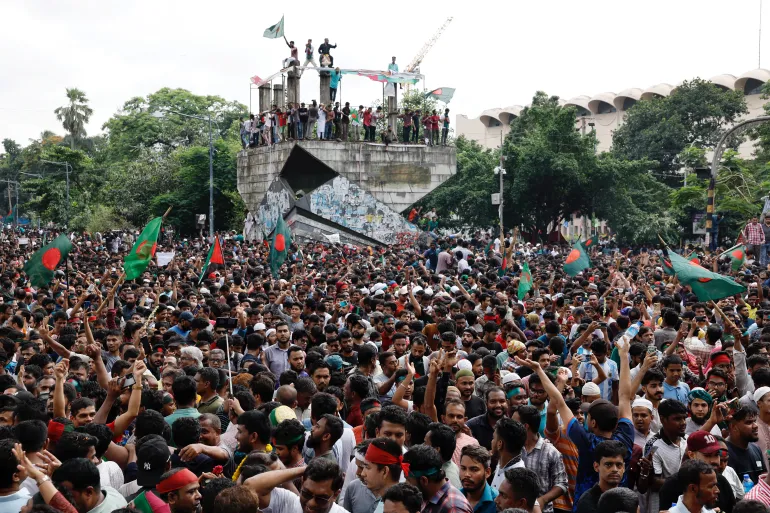Table of Contents
Trump’s Bold Ceasefire Claim
The Middle East, a region long scarred by conflict, stands at a pivotal moment. On June 24, 2025, U.S. President Donald Trump announced a “complete and total ceasefire” between Israel and Iran, igniting global attention and cautious optimism. This declaration came amidst a flurry of missile strikes, heated rhetoric, and denials from Tehran, painting a complex picture of diplomacy, aggression, and uncertainty. Trump’s claim of brokering peace in what he dubbed the “12-day war” has sparked hope, skepticism, and intense scrutiny. As the world watches, the question looms: Can this ceasefire hold, or is it merely a pause in a volatile saga? This blog dives deep into the unfolding drama, Trump’s role, his storied career, and the broader implications for a region teetering on the edge.
The Ceasefire Announcement: A Dramatic Turning Point
In a late-night post on Truth Social, President Trump declared that Israel and Iran had agreed to a 24-hour phased ceasefire, set to begin around midnight Eastern Time on June 24, 2025. He described a structured plan: Iran would halt its attacks first, followed by Israel 12 hours later, culminating in an “official end” to the conflict within a day. Trump hailed the agreement as a triumph, calling it the end of the “12-day war” and suggesting it averted a prolonged catastrophe that could have destabilized the entire Middle East. His words brimmed with confidence, painting a vision of peace, prosperity, and mutual respect between the two nations.
Yet, the announcement was met with immediate complications. Iran’s Foreign Minister Abbas Araghchi swiftly dismissed Trump’s claim, stating on X that there was “no agreement” on a ceasefire. However, he offered a critical caveat: if Israel ceased its “illegal aggression” by 4 a.m. Tehran time, Iran would not continue its military response. This conditional statement, posted just after the deadline, hinted at a possible alignment with Trump’s timeline, though cloaked in defiance. Israel, meanwhile, remained silent, offering no official confirmation of the ceasefire, even as reports emerged of fresh Iranian missile strikes that killed three in Israel just before the proposed truce.
A Region Under Fire: The Context of Conflict
The ceasefire claim follows a tense 12-day escalation that began with Israel’s “Operation Rising Lion,” targeting Iranian military and nuclear assets. The United States joined the fray, striking key Iranian nuclear sites like Fordow, Natanz, and Isfahan on June 22, 2025. Iran retaliated with missile attacks on a U.S. airbase in Qatar, which were intercepted, and launched strikes on Israeli cities, including Haifa. Tehran faced heavy Israeli bombardment overnight, with residents describing scenes of trauma and destruction. Iran’s state media framed the ceasefire as “imposed” on Israel after its “successful” attack on the U.S. base, while dismissing Trump’s narrative as exaggerated.
This tit-for-tat violence has left the region on edge. The Israeli and U.S. strikes have reportedly slowed Iran’s nuclear enrichment capabilities, but analysts warn they may have hardened Tehran’s resolve to pursue a nuclear weapon. The ceasefire, if realized, could offer a brief respite, but the lack of clear terms and mutual trust raises doubts about its durability. Trump’s assertion that both nations approached him “almost simultaneously” seeking peace adds intrigue, though Iran’s claim that Trump “begged” for the truce suggests a battle of narratives as fierce as the military one.
Trump’s Diplomatic Gamble: Behind the Scenes
Trump’s announcement was no solo act. A senior White House official revealed that the president personally engaged with Israeli Prime Minister Benjamin Netanyahu to secure the ceasefire. Vice President J.D. Vance, Secretary of State Marco Rubio, and special envoy Steve Witkoff reportedly communicated with Iranian officials through direct and indirect channels. These efforts underscore Trump’s hands-on approach, blending his signature bravado with backchannel diplomacy. However, Iran’s Supreme Leader Ayatollah Ali Khamenei’s role remains unclear, with his earlier vow of no surrender casting a shadow over the talks.
Trump’s timing is notable, coinciding with his departure for a NATO summit in the Netherlands. The ceasefire claim positions him as a global peacemaker, a narrative he has long cultivated. He even suggested the conflict be named the “12-day war,” evoking the 1967 Six-Day War, and hinted at deserving a Nobel Peace Prize. The White House amplified his message, sharing a photo of Trump with a red hat proclaiming, “Trump was right about everything.” Yet, the absence of confirmation from Israel and Iran’s conditional response temper the triumph, highlighting the fragility of this diplomatic moment.
Who Is Donald Trump? The Man Behind the Ceasefire Claim
To understand Trump’s role, we must explore the man himself—a figure whose larger-than-life persona has shaped politics, business, and media for decades. Born on June 14, 1946, in Queens, New York, Donald John Trump grew up in a wealthy family, inheriting a real estate empire from his father, Fred Trump. He took the helm of the Trump Organization in the 1970s, transforming it into a global brand synonymous with luxury, from skyscrapers like Trump Tower to golf resorts and casinos. His business ventures, however, were not without controversy, marked by bankruptcies, lawsuits, and allegations of financial mismanagement.
Trump’s wealth, estimated at $4.8 billion by Forbes in 2025, stems from real estate, media ventures, and licensing deals. His reality TV show, The Apprentice, aired from 2004 to 2017, cementing his image as a decisive, charismatic tycoon with the catchphrase, “You’re fired!” This media presence catapulted him into the political arena, where he ran as a Republican and won the presidency in 2016, serving from 2017 to 2021 before returning to office in 2025 as the 47th President.
Trump’s Political Journey: A Polarizing Force
Trump’s political career is a study in disruption. His first term was defined by tax cuts, deregulation, and a foreign policy emphasizing “America First.” He brokered the Abraham Accords, normalizing relations between Israel and several Arab states, a milestone that informs his current Middle East diplomacy. However, his tenure was also marred by controversies, including two impeachments and the January 6, 2021, Capitol riot. His unorthodox style—blunt, combative, and amplified by social media—divided Americans but galvanized a loyal base.
Returning to the White House in 2025, Trump has leaned into his dealmaker persona. His ceasefire announcement reflects this, blending aggression (U.S. strikes on Iran) with diplomacy (brokering talks). Critics argue his approach risks escalation, while supporters see it as bold leadership. Trump’s ability to command global attention, honed over decades in business and media, makes his ceasefire claim a headline-grabbing moment, whether or not it holds.
The Industry Titan: Trump’s Presence in Business and Media
Beyond politics, Trump’s influence spans industries. His real estate portfolio includes iconic properties like Mar-a-Lago and Trump International Hotel. His branding extends to products from ties to steaks, though not all ventures succeeded. The Trump Organization faced legal scrutiny, including a 2022 fraud case, but Trump’s personal brand remains resilient, fueled by his media savvy.
In media, Trump redefined political communication. His mastery of Twitter (now X) and Truth Social allows him to shape narratives directly, as seen in his ceasefire posts. His reality TV stardom gave him a unique edge, blending entertainment with authority. This crossover appeal keeps him relevant, whether negotiating peace or rallying supporters. Trump’s industry presence, built on charisma and controversy, amplifies his voice in moments like the Israel-Iran ceasefire.
What’s Next for the Middle East?
The ceasefire’s fate hinges on trust—or the lack thereof. Iran’s conditional agreement and Israel’s silence suggest a tenuous pause rather than a lasting peace. The region’s wounds run deep, with civilian casualties, displaced families, and shattered infrastructure. Trump’s vision of “love, peace, and prosperity” for Israel and Iran feels aspirational, but the reality is messier. The U.S. and Israeli strikes may have curbed Iran’s nuclear ambitions temporarily, but they risk fueling long-term defiance.
Global reactions are mixed. Financial markets, including crude oil, stabilized after Trump’s announcement, reflecting cautious optimism. Wealthy Gulf states like Saudi Arabia and the UAE, fearing regional spillover, have pushed for diplomacy. The NATO summit offers Trump a stage to tout his success, but any violation of the ceasefire could undermine his narrative. For now, the world holds its breath, hoping this fragile truce can pave the way for stability.
A Moment of Hope Amid Uncertainty
Trump’s ceasefire claim is a bold stroke in a region desperate for calm. Whether it marks the end of the “12-day war” or a fleeting pause, it underscores his enduring ability to shape global events. From real estate mogul to reality TV star to president, Trump’s journey is one of reinvention and resilience. His wealth, influence, and polarizing presence make him a central figure in this drama, for better or worse. As the Middle East navigates this uncertain chapter, the ceasefire’s success will test Trump’s dealmaking prowess and the region’s capacity for peace.




